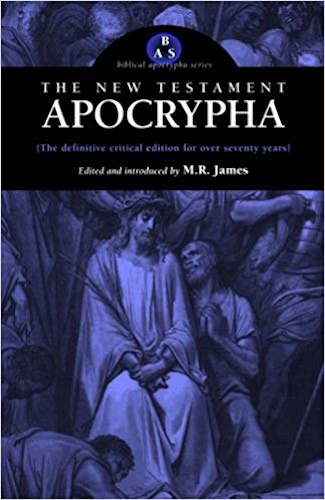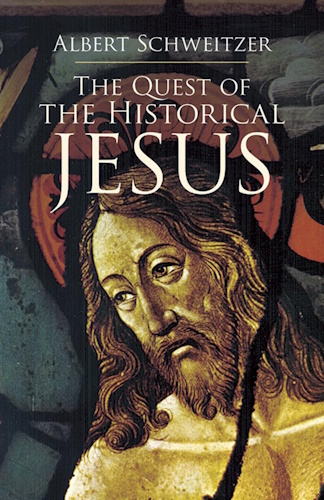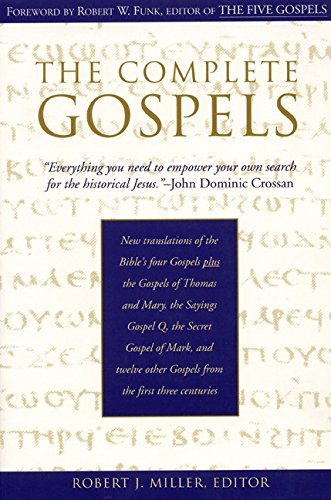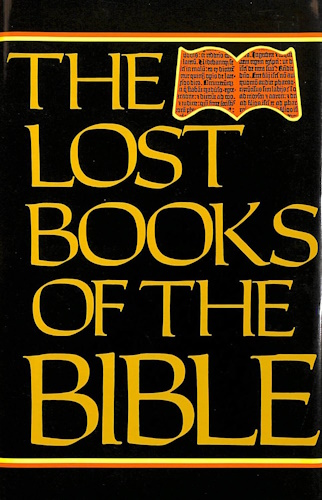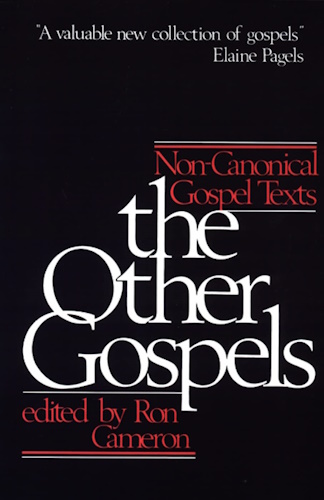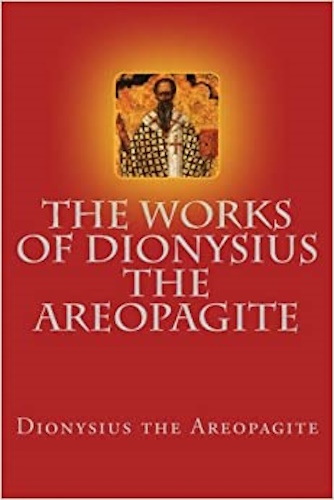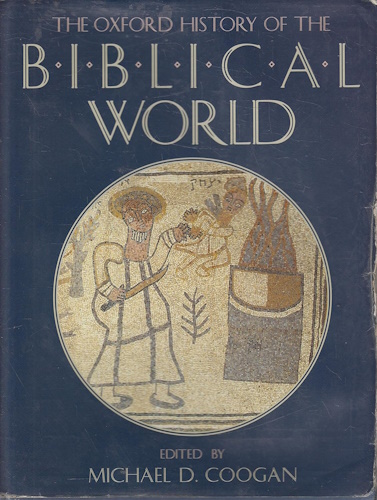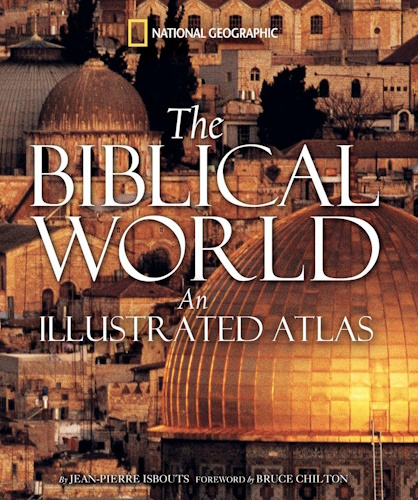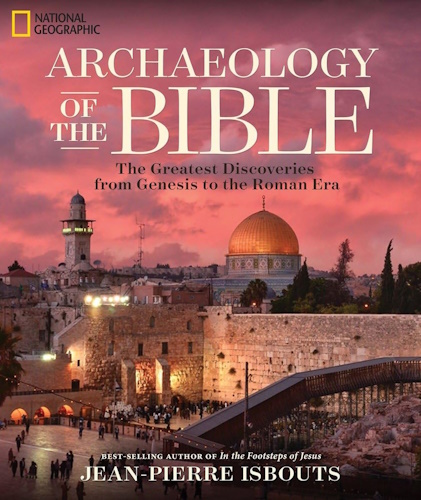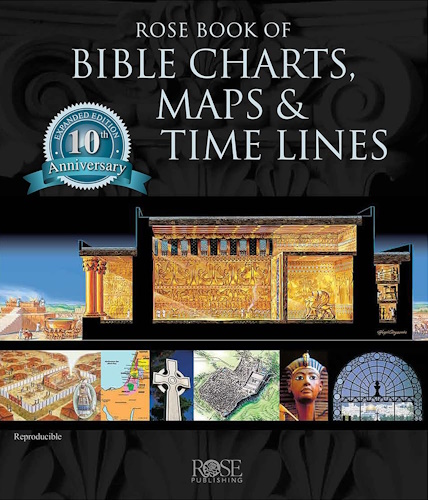
The works of Dionysius the Areopagite
Ecclesiastical Hierarchy
Caput III
I. Concerning things accomplished in the Synaxis.
Courage, then, since we have made mention of this (Eucharist) which we may not pass over to celebrate any other Hierarchical function in preference to it. For according to our illustrious
page 88
Leader, it is "initiation of initiations," and one must first lay down the Divine description of it, before the rest, from the inspired and hierarchical science of the Oracles, and then be borne by the supremely Divine Spirit to its sacred contemplation. First, let us reverently consider this; for what reason that, which is common also to the other Hierarchical initiations, is pre-eminently attributed to it, beyond the rest; and it is uniquely called, "Communion and Synaxis," when each consecrating function both collects our divided lives into uniform deification, and gives communion and union with the One, by the Godlike folding together of our diversities. Now we affirm that the Perfecting by the communications of the other Hierarchical symbols springs from the supremely Divine and perfecting gifts of it. For it scarcely ever happens, that any Hierarchical initiation is completed without the most Divine Eucharist, as head of the things done in each, ministering the collecting of the person initiated to the One, and completing his communion with God, by the Divinely transmitted gift of the perfecting mysteries. If, then, each of the Hierarchical initiations, being indeed incomplete, will not make perfect our communion and our gathering to the One, even its being initiation is precluded on account of the lack of completeness. Now since the imparting of the supremely Divine mysteries to the man initiated is the head and tail of every initiation, naturally then the
page 89
Hierarchical judgment hit upon an appellation propel to it, from the truth of the facts. Thus, for instance, with regard to the holy initiation of the Divine birth; since it imparts first-Light, and is head of all the Divine illuminations, we celebrate the true appellation from the enlightening effected. For, though it be common to all Hierarchical functions to impart the gift of sacred light to those initiated, yet it239 gave to me the power to see first, and through its first light I am enlightened to gaze upon the other religious rites. Having said this, let us minutely investigate and examine hierarchically the accurate administration and contemplation of the most pure initiation, in every particular.
II. Mysterion240 of Synaxis, that is, Communion.
The Hierarch, having completed a reverent prayer, near the Divine Altar, starts with the incensing, and proceeds to every part of the enclosure of the sacred place; he then returns to the Divine Altar, and begins the sacred chanting of the Psalms, the whole ecclesiastical assembly chanting, with him, the sacred language of the Psalter. Next follows the reading of the Holy Scriptures by the Leitourgoi. After these readings the catechumens quit the sacred enclosure, as well as the "possessed," and the
page 90
penitents. But those who are deemed worthy of the sight and participation of the Divine Mysteries remain. Of the Leitourgoi, some stand near the closed gates of the sanctuary, whilst others perform some other duty of their own rank. But chosen members of the ministering Order with the Priests lay the holy Bread and the Cup of Blessing upon the Divine Altar, whilst the universal Song241 of Praise is being professed beforehand by the whole body of the Church. Added to these, the Divine Hierarch makes a sacred prayer, and proclaims the holy Peace to all. When all have kissed each other, the mystical proclamation of the holy tablets is performed. When the Hierarch and the Priests have washed their hands in water, the Hierarch stands in the midst of the Divine Altar, and the chosen Deacons alone, with the Priests, stand around. The Hierarch, when he has sung the sacred works of God, ministers things most divine, and brings to view the things sung, through the symbols reverently exposed242, and when he has shewn the gifts of the works of God243, he first proceeds to the sacred participation of the same, and turns and exhorts the others. When he has received and distributed the supremely Divine Communion, he terminates with a holy thanksgiving; whilst the multitude have merely glanced at the Divine symbols alone, he is ever conducted by the Divine Spirit, as becomes
page 91
a Hierarch, in the purity of a Godlike condition, to the holy sources of the things performed, in blessed and intelligible visions.
III. Contemplation.
Section I.
Here then, too, O excellent son, after the images, I come in due order and reverence to the Godlike reality of the archetypes, saying here to those yet being initiated, for the harmonious guidance of their souls, that the varied and sacred composition of the symbols is not without spiritual contemplation for them, as merely presented superficially. For the most sacred chants and readings of the Oracles teach them a discipline of a virtuous life, and previous to this, the, complete purification from destructive evil; and the most Divine, and common, and peaceful distribution of one and the same, both Bread and Cup, enjoins upon them a godly fellowship in character, as having a fellowship in food, and recalls to their memory the most Divine Supper, and arch-symbol of the rites performed, agreeably with which the Founder of the symbols Himself excludes, most justly, him who had supped with Him on the holy things, not piously244 and in a manner suitable to his character; teaching at once, clearly
page 92
and Divinely, that the approach to Divine mysteries with a sincere mind confers, on those who draw nigh, the participation in a gift according to their own character.
Section II.
Let us, then, as I said, leave behind these things, beautifully depicted upon the entrance of the. innermost shrine, as being sufficient for those, who are yet incomplete for contemplation, and let us proceed from the effects to the causes; and then, Jesus lighting the way, we shall view our holy Synaxis, and the comely contemplation of things intelligible, which makes radiantly manifest the blessed beauty of the archetypes. But, oh, most Divine and holy initiation, uncovering the folds of the dark mysteries enveloping thee in symbols, be manifest to us in thy bright glory, and fill our intellectual visions with single and unconcealed light.
Section III.
We must, then, in my opinion, pass within the All Holy Mysteries, after we have laid bare the intelligible of the first of the votive gifts, to gaze upon its Godlike beauty, and view the Hierarch, divinely going with sweet fragrance from the Divine Altar to the furthermost bounds of the holy place, and again returning to it to complete the function. For the Blessedness, supremely Divine above all, even if, through Divine goodness, It goes forth to the communion of the holy who participate in It, yet
page 93
It never goes outside its essential unmoved position and steadfastness; and illuminates all the Godlike in due degree, being always self-centred, and in nowise moved from its own proper identity; so, too, the Divine initiation (sacrament) of the Synaxis, although it has a unique, and simple, and enfolded Source, is multiplied, out of love towards man, into the holy variety of the symbols, and travels through the whole range of the supremely Divine description; yet uniformly it is again collected from these, into its own proper Monady, and unifies those who are being reverently conducted towards it. In the same Godlike manner, the Divine Hierarch, if he benignly lowers to his subordinates his own unique Hierarchical science, by using the multiplicities of the holy enigmas, yet again, as absolute, and not to be held in check by smaller things, he is restored to his proper headship without diminution, and, when he has made the intellectual entry of himself to the One, he sees clearly the uniform raisons d'être of the things done, as he makes the goal of his philanthropic progress to things secondary the more Divine245 return to things primary.
Section IV.
The chanting of the Psalms, being co-essential with almost all the Hierarchical mysteries, was not likely to be separated from the most Hierarchical of all. For every holy and inspired Scripture sets forth
page 94
for those meet for deification, either the originated beginning and ordering of things from God; or the Hierarchy and polity of the Law; or the distributions and possessions of the inheritances of the people of God; or the understanding of sacred judges, or of wise kings, or of inspired Priests: or philosophy of men of old time, unshaken in endurances of the things let loose in variety and multitude; or the treasures of wisdom for the conduct of life; or songs and inspired pictures of Divine Loves; or the declaratory predictions of things to come; or the Theandric works of Jesus; or the God-transmitted and God-imitating polities and holy teachings of His Disciples, or the hidden and mystic gaze of the beloved and divinely sweet of the disciples, or the supermundane theology of Jesus; and implanted them in the holy and Godlike instructions of the mystic rites. Now the sacred description of the Divine Odes, whose purpose is to sing the words and works of God throughout, and to praise the holy words and works of godly men, forms an universal Ode and narrative of things Divine, and makes, in those who inspiredly recite it, a habit suitable for the reception and distribution of every Hierarchical mystery.
Section V.
When, then, the comprehensive melody of the holy Hymns has harmonized the habits of our souls to the things which are presently to be ministered, and, by the unison of the Divine Odes, as one and concordant chorus of holy men, has established an accord with things Divine, and themselves246, and one another, the things, more strained and obscure in the intellectual language of the mystic Psalms, are expanded by the most holy lections of the inspired writings, through more full and distinct images and narratives. He, who devoutly contemplates these, will perceive the uniform and one conspiration, as being moved by One, the supremely Divine Spirit. Hence, naturally, in the history of the world, after the more ancient247 tradition, the new Covenant is proclaimed; the inspired and Hierarchical order teaching this, as I think, that the one affirmed the Divine works of Jesus, as to come; but the other accomplished; and as that described the truth in figures, this shewed it present. For the accomplishment, within this, of the predictions of that, established the truth, and the work of God is a consummation of the Word of God.
Section VI.
Those who absolutely have no ear for these sacred initiations do not even recognize the images,—
page 96
unblushingly rejecting the saving revelation of the Divine Birth, and in opposition to the Oracles reply to their destruction, "Thy ways I do not wish to know."
Now the regulation of the holy Hierarchy permits the catechumens, and the possessed, and the penitents, to hear the sacred chanting of the Psalms, and the inspired reading of the all-Holy Scriptures; but it does not invite them to the next religious services and contemplations, but only the eyes of the initiated. For the Godlike Hierarchy is full of reverent justice, and distributes savingly to each, according to their due, bequeathing savingly the harmonious communication of each of the things Divine, in measure, and proportion, and due time. The lowest rank, then, is assigned to the catechumens, for they are without participation and instruction in every Hierarchical initiation, not even having the being in God by Divine Birth, but are yet being brought to248 Birth by the Paternal Oracles, and moulded, by life-giving formations, towards the blessed introduction to their first life and first light from Birth in God. As, then, children after the flesh, if, whilst immature and unformed, they should anticipate their proper delivery, as untimely born and abortions, will fall to earth without life and without light; and no one, in his senses, would say from what he saw, that they, released from the darkness of the womb, were brought to the light (for the
page 97
medical authority, which is learned in the functions of the body, would say that light operates on things receptive of light); so also the all-wise science of religious rites brings these first to delivery, by the preparatory nourishment of the formative and life-giving Oracles; and when it has made their person ripe for Divine Birth, gives to them savingly, in due order, the participation in things luminous and perfecting; but, at present, it separates things perfect from them as imperfect, consulting the good order of sacred things, and the delivery and life of the catechumens, in a Godlike order of the Hierarchical rites.
Section VII.
Now the multitude of the possessed indeed is unholy, but it is next above the catechumens, which is lowest. Nor is that which has received a certain participation in the most holy offices, but is yet entangled by contrary qualities, whether enchantments or terrors, on a par, as I think, with the altogether uninitiated and entirely uncommunicated in the Divine initiations; but, even for them, the view and participation in the holy mysteries is contracted, and very properly. For, if it be true that the altogether godly man, the worthy partaker of the Divine mysteries, the one carried to the very summit of the Divine likeness, to the best of his powers, in complete and most perfect deifications, does not even perform the things of the flesh, beyond the most necessary requirements of nature, and then as
page 98
a parergon, but will be, at the same time, a temple, and a follower, according to his ability, of the supremely Divine Spirit, in the highest deification, implanting like in like;—such an one as this would never be possessed by opposing phantoms or fears, but will laugh them to scorn, and when they approach, will cast them down and put them to flight, and will act rather than comply, and in addition to the passionless and indomitableness of his own character, will be seen also a physician to others, for such "possessions" as these; (and I think further, yea, rather, I know certainly that the most impartial discrimination of Hierarchical persons knows more than they249, that such as are possessed with a most detestable possession, by departing from the Godlike life, become of one mind and one condition with destructive demons, by turning themselves from things that really are, and undying possessions, and everlasting pleasures, for the sake of the most base and impassioned folly destructive to themselves; and by desiring and pursuing the earthly variableness, and the perishable and corrupting pleasures, and the unstable comfort in things foreign to their nature, not real but seeming;) these then, first, and more properly than those, were shut out by the discriminating authority of the Deacon; for it is not permitted to them to have part in any other holy function than the teaching of the Oracles, which is likely to turn them to better things. For, if the
page 99
supermundane Service of the Divine Mysteries excludes those under penitence, and those who have already attained it, not permitting anything to come near which is not completely perfect, and proclaims, and this in all sincerity, that "I am unseen and uncommunicated by those who are in any respect imperfectly weak as regards the summit of the Divine Likeness" (for that altogether most pure voice scares away even those who cannot be associated with the worthy partakers of the most Divine mysteries).; how much more, then, will the multitude of those who are under the sway of their passions be unhallowed and alien from every sight and participation in the holy mysteries. When, then, the uninitiated in the mysteries, and the imperfect, and with them the apostates from the religious life, and after them, those who through unmanliness are prone to the fears and fancies of contrary influences, as not reaching through the persistent and indomitable inclination towards godliness, the stability and activity of a Godlike condition; then, in addition to these, those who have separated indeed from the contrary life, but have not yet been cleansed from its imaginations by a godly and pure habit and love, and next, those who are not altogether uniform, and to use an expression of the Law, "entirely without spot and blemish," when these have been excluded from the divine temple and the service which is too high for them, the all-holy ministers and loving contemplators of things all-holy, gazing reverently upon the most pure rite,
page 100
sing in an universal Hymn of Praise250 the Author and Giver of all good, from Whom the saving mystic Rites were exhibited to us, which divinely work the sacred deification of those being initiated. Now this Hymn some indeed call a Hymn of Praise, others, the symbol of worship, but others, as I think, more divinely, a Hierarchical thanksgiving, as giving a summary of the holy gifts which come to us from God. For, it seems to me the record251 of all the works of God related to have been done for us in song, which, after it had benevolently fixed our being and life, and moulded the Divine likeness in ourselves to beautiful archetypes, and placed us in participation of a more Divine condition and elevation; but when it beheld the dearth of Divine gifts, which came upon us by our heedlessness, is declared to have called us back to our first condition, by goods restored, and by the complete assumption252 of what was ours, to have made good the most perfect impartation of His own, and thus tp have given to us a participation in God and Divine things.
Section VIII.
When the supremely Divine love towards Man has thus been religiously celebrated, the Divine Bread is presented, veiled, and likewise the Cup of Blessing, and the most Divine greeting is
page 101
devoutly performed, and the mystic and supermundane recital of the holy-written tablets. For it is not possible to be collected to the One, and to partake of the peaceful union with the One, when people are divided amongst themselves. For if, being illuminated by the contemplation and knowledge of the One, we would be united to an uniform and Divine agreement, we must not permit ourselves to descend to divided lusts, from which are formed earthly enmities, envious and passionate, against that which is according to nature. This unified and undivided life is, in my opinion, established by the holy service of the "peace," which establishes like in like, and separates the Divine and unified visions from things divided. The recital of the holy tablets after the "peace" proclaims those who have passed through life holily, and have reached the term of a virtuous life without faltering, urging and conducting us to their blessed condition and Divine repose, through similarity to them, and, announcing them as living, and, as the Word of God says, "not dead, but as having passed from death to a most divine life253."
Section IX.
But observe that they are enrolled in the holy memorials, not as though the Divine memory were represented under the figure of a memorial, after the manner of men; but as one might say, with
page 102
reverence towards God, as beseems the august and unfailing knowledge in God of those who have been perfected in the likeness of God. For "He knoweth," say the Oracles, "them that are His," and "precious, in the sight of the Lord, is the death of His saints, "death of saints," being said, instead of the perfection in holiness. And bear this religiously in mind, that when the worshipful symbols have been placed on the Divine Altar, through which (symbols) the Christ is signified and partaken, there is inseparably present the reading of the register of the holy persons, signifying the indivisible conjunction of their supermundane and sacred union with Him. When these things have been ministered, according to the regulations described, the Hierarch, standing before the most holy symbols, washes his hands with water, together with the reverend order of the Priests. Because, as the Oracles testify, when a man has been washed, he needs no other washing, except that of his extremities, i.e his lowest; through which extreme cleansing he will be resistless and free, as altogether uniform, in a sanctified habit of the Divine Likeness, and advancing in a goodly manner to things secondary, and being turned again uniquely to the One, he will make his return, without spot and blemish, as preserving the fulness and completeness of the Divine Likeness.
Section X.
There was indeed the sacred laver, as we have said, in the Hierarchy of the Law254; and the present cleansing of the hands of the Hierarch and the Priests suggests it. For it behoves those who approach the most hallowed service to be purified even to the remotest imaginations of the soul, through likeness to it, and, as far as possible, to draw nigh; for thus they will shed around more visibly the Divine manifestations, since the supermundane flashes permit their own splendour to pass more thoroughly and brilliantly into the brightness of mirrors like themselves. Further, the cleansing of the Hierarch and the Priests to their extremities, i.e. lowest, takes place before the most holy symbols, as in the presence of Christ, Who surveys all our most secret thoughts, and since the utmost purification is established under His all-surveying scrutiny, and most just and unflinching judgment, the Hierarch thus becomes one with the things Divine, and, when he has extolled the holy works of God, he ministers things most Divine, and brings to view the things being sung255.
Section XI.
We will now explain, in detail, to the best of our ability, certain works of God, of which we spoke. For I am not competent to sing all, much less to know accurately, and to reveal their mysteries to
page 104
others. Now whatever things have been sung and ministered by the inspired Hierarchs, agreeably to the Oracles, these we will declare, as far as attainable to us, invoking the Hierarchical inspiration to our aid. When, in the beginning, our human nature had thoughtlessly fallen from the good things of God, it received, by inheritance, the life subject to many passions, and the goal of the destructive death256. For, as a natural consequence, the pernicious falling away from genuine goodness and the transgression of the sacred Law in Paradise delivered the man fretted with the life-giving yoke, to his own downward inclinations and the enticing and hostile wiles of the adversary—the contraries of the divine goods; thence it pitiably exchanged for the eternal, the mortal, and, having had its own origin in deadly generations, the goal naturally corresponded with the beginning; but having willingly fallen from the Divine and elevating life, it was carried to the contrary extremity,—the variableness of many passions, and lead astray, and turned aside from the strait way leading to the true God,—and subjected to destructive and evil-working multitudes—naturally forgot that it was worshipping, not gods, or friends, but enemies. Now when these had treated it harshly, according to their own cruelty, it fell pitiably into danger of annihilation and destruction; but the boundless Loving-kindness of the supremely Divine goodness towards man did not, in Its benevolence, withdraw from us Its spontaneous forethought, but
page 105
having truly participated sinlessly in all things belonging to us, and having been made one with our lowliness in connection with the unconfused and flawless possession of Its own properties in full perfection, It bequeathed to us, as henceforth members of the same family, the communion with Itself, and proclaimed us partakers of Its own beautiful things; having, as the secret teaching holds, loosed the power of the rebellious multiplicity, which was against us; not by force, as having the upper hand, but, according to the Logion, mystically transmitted to us, "in judgment and righteousness."
The things within us, then, It benevolently changed to the entire contrary. For the lightless within Our mind It filled with blessed and most Divine Light, and adorned the formless with Godlike beauties; the tabernacle257 of our soul It liberated from most damnable passions and destructive stains by a perfected deliverance of our being which was all but prostrate, by shewing to us a supermundane elevation, and an inspired polity in our religious assimilation to Itself, as far as is possible.
Section XII.
But how could the Divine imitation otherwise become ours, unless the remembrance of the most holy works of God were perpetually being renewed by the mystical teachings and ministrations of the Hierarchy? This, then, we do, as the Oracles say,
page 106
"for Its remembrance." Wherefore the Divine Hierarch, standing before the Divine Altar, extols the aforesaid holy works of God, which proceed from the most divine forethought of Jesus on our behalf, which He accomplished for preservation of our race, by the good pleasure of the most Holy Father in the Holy Spirit, according to the Logion. When he has extolled their majesty, and gazed, with intellectual eyes, upon their intelligible contemplation, he proceeds to their symbolical ministration,—and this,—as transmitted from God. Whence after the holy hymns of the works of God, he piously and, as becomes a hierarch, deprecates his own unworthiness for a service above his merits, first, reverently crying aloud to Him, "Thou hast said, This do for My remembrance." Then,258 having asked to become meet for this the God-imitating of service, and to consecrate things Divine by the assimilation to Christ Himself, and to distribute them altogether purely, and that those who shall partake of things holy may receive them holily, he consecrates things most Divine, and brings to view through the symbols reverently exposed the things whose praises are being sung. For when he has unveiled the veiled and undivided Bread, and divided it into many, and has divided the Oneness of the Cup to all, he symbolically multiplies and distributes the unity, completing in these an altogether most holy ministration. For the "one," and "simple," and
page 107
"hidden," of Jesus, the most supremely Divine Word, by His incarnation amongst us, came forth, out of goodness and love towards man, to the compound and visible, and benevolently devised the unifying, communion, having united, to the utmost, our lowliness to the most Divine of Himself; if indeed we have been fitted to Him, as members to a body, after the identity of a blameless and Divine life, and have not, by being killed through destructive passions, become inharmonious, and unfastened, and unyoked, to the godly and most healthy members. For, if we aspire to communion with Him, we must keep our eye fixed upon His most godly Life in the flesh, and we must retrace our path to the Godlike and blameless habit of Its holy sinlessness by assimilation to It; for thus He will communicate harmoniously to us the communion with the similar.
Section XIII.
The Hierarch makes known these things to those who are living religiously, by bringing the veiled gifts to view, by dividing their oneness into many, and by making the recipients partakers of them, by the utmost union of the things distributed with those who receive them. For he delineates in these things under sensible forms our intelligible life in figures, by bringing to view the Christ Jesus from the Hidden within the Divine Being, out of love to man, made like unto us by the all-perfect and unconfused
page 108
incarnation in our race, from us, and advancing to the divided condition of ourselves, without change from the essential One, and calling the human race, through this beneficent love of man, into participation with Himself and His own good things, provided we are united to His most Divine Life by our assimilation to it, as far as possible; and by this, in very truth, we shall have been perfected, as partakers of God and of Divine things.
Section XIV.
Having received and distributed the supremely Divine Communion, he terminates with a holy thanksgiving, in which the whole body of the Church take part. For the Communion precedes the imparting, and the reception of the mysteries, the mystic distribution. For this is the universal regulation and order of the Divine Mysteries, that the reverend Leader should first partake, and be filled with the gifts, to be imparted, through him, from God to others, and so impart to others also. Wherefore, those who rashly content themselves with the inspired instructions, in preference to a life and condition agreeable to the same, are profane, and entirely alien from the sacred regulation established. For, as in the case of the bright shining of the sun, the more delicate and luminous substances, being first filled with the brilliancy flowing into them, brightly impart their overflowing light to things after them; so it is not tolerable that one, who has not
page 109
become altogether Godlike in his whole character, and proved to be in harmony with the Divine influence and judgment, should become Leader to others, in the altogether divine.
Section XV.
Meanwhile, the whole order of the Priests having been collected together in hierarchical order, and communicated in the most Divine mysteries, finishes with a holy thanksgiving, after having recognized and sung the favours of the works of God, according to their degree. So that those, who have not partaken and are ignorant of things Divine, would not attain to thanksgiving, although the most Divine gifts are, in their essential nature, worthy of thanksgiving. But, as I said, not having wished even to look at the Divine gifts, from their inclination to things inferior, they have remained throughout ungracious towards the boundless graces of the works of God. "Taste and see," say the Oracles, for, by the sacred initiation of things Divine, the initiated recognize their munificent graces, and, by gazing with utmost reverence upon their most Divine height and breadth in the participation, they will sing the supercelestial beneficent works of the Godhead with gracious thanksgiving.
page 110239 Baptism, Ap. C. lib. 3, c. 16.
240 See Traicté de la Liturgie ou S. Messe selon l'usage et la forme des apostres, et de leur disciple Sainct Denys, Apostre des François, par. Gilb. Genebrard, archevesque d'Aix.
241 Ap. C. lib. 8, s. 12, Lit. of Dionysius, p. 189.
242 As in Denmark.
243 θεουργίων—Divine Mysteries?
244 John xiii. 11. St. Cyprian thought Judas was excluded; St. Augustine not. See Cornelius a Lapide on John xiii. 11 Ap. C. S, s. 14.
245 Hieracles, p. 41.
246 Republic, lib. iv. ad finem. Dulac, p. 426-7.
247 The Law and the Prophets.
248 See Plato, Thet. i. 114, 115. Dulac, 429.
249 The energoumenoi.
250 The whole Psalter is said in Liturgy of St. James before celebration.
251 Liturgy of Dionysius, p. 191.
252 Incarnation.
255 As is the use in Denmark.
256 The Fall.
257 Plato, Crat. i. 295.
258Prayer of humble access.
![]()
![]()
-
Urantia Book, 44:0.11 - The Celestial Artisans
Never in your long ascendancy will you lose the power to recognize your associates of former existences. Always, as you ascend inward in the scale of life, will you retain the ability to recognize and fraternize with the fellow beings of your previous and lower levels of experience. Each new translation or resurrection will add one more group of spirit beings to your vision range without in the least depriving you of the ability to recognize your friends and fellows of former estates.
-
Princess Bride 1987 Wallace Shawn (Vizzini) and Mandy Patinkin (Inigo Montoya)
Vizzini: HE DIDN'T FALL? INCONCEIVABLE.
Inigo Montoya: You keep using that word. I do not think it means what you think it means. -
Urantia Book, 117:4.14 - The Finite God
And here is mystery: The more closely man approaches God through love, the greater the reality -- actuality -- of that man. The more man withdraws from God, the more nearly he approaches nonreality -- cessation of existence. When man consecrates his will to the doing of the Father's will, when man gives God all that he has, then does God make that man more than he is.
-
Urantia Book, 167:7.4 - The Talk About Angels
"And do you not remember that I said to you once before that, if you had your spiritual eyes anointed, you would then see the heavens opened and behold the angels of God ascending and descending? It is by the ministry of the angels that one world may be kept in touch with other worlds, for have I not repeatedly told you that I have other sheep not of this fold?"
-
Urantia Book, Foreword - 0:12.12 - The Trinities
But we know that there dwells within the human mind a fragment of God, and that there sojourns with the human soul the Spirit of Truth; and we further know that these spirit forces conspire to enable material man to grasp the reality of spiritual values and to comprehend the philosophy of universe meanings. But even more certainly we know that these spirits of the Divine Presence are able to assist man in the spiritual appropriation of all truth contributory to the enhancement of the ever-progressing reality of personal religious experience—God-consciousness.
-
Urantia Book, 1:4.3 - The Mystery Of God
When you are through down here, when your course has been run in temporary form on earth, when your trial trip in the flesh is finished, when the dust that composes the mortal tabernacle "returns to the earth whence it came"; then, it is revealed, the indwelling "Spirit shall return to God who gave it." There sojourns within each moral being of this planet a fragment of God, a part and parcel of divinity. It is not yet yours by right of possession, but it is designedly intended to be one with you if you survive the mortal existence.
-
Urantia Book, 1:4.1 - The Mystery Of God
And the greatest of all the unfathomable mysteries of God is the phenomenon of the divine indwelling of mortal minds. The manner in which the Universal Father sojourns with the creatures of time is the most profound of all universe mysteries; the divine presence in the mind of man is the mystery of mysteries.
-
Urantia Book, 1:4.6 - The Mystery Of God
To every spirit being and to every mortal creature in every sphere and on every world of the universe of universes, the Universal Father reveals all of his gracious and divine self that can be discerned or comprehended by such spirit beings and by such mortal creatures. God is no respecter of persons, either spiritual or material. The divine presence which any child of the universe enjoys at any given moment is limited only by the capacity of such a creature to receive and to discern the spirit actualities of the supermaterial world.
-
Urantia Book, 11:0.1 - The Eternal Isle Of Paradise
Paradise is the eternal center of the universe of universes and the abiding place of the Universal Father, the Eternal Son, the Infinite Spirit, and their divine co-ordinates and associates. This central Isle is the most gigantic organized body of cosmic reality in all the master universe. Paradise is a material sphere as well as a spiritual abode. All of the intelligent creation of the Universal Father is domiciled on material abodes; hence must the absolute controlling center also be material, literal. And again it should be reiterated that spirit things and spiritual beings are real.
-
Urantia Book, 50:6.4 - Planetary Culture
Culture presupposes quality of mind; culture cannot be enhanced unless mind is elevated. Superior intellect will seek a noble culture and find some way to attain such a goal. Inferior minds will spurn the highest culture even when presented to them ready-made.
-
Urantia Book, 54:1.6 - True And False Liberty
True liberty is the associate of genuine self-respect; false liberty is the consort of self-admiration. True liberty is the fruit of self-control; false liberty, the assumption of self-assertion. Self-control leads to altruistic service; self-admiration tends towards the exploitation of others for the selfish aggrandizement of such a mistaken individual as is willing to sacrifice righteous attainment for the sake of possessing unjust power over his fellow beings.
-
Urantia Book, 54:1.9 - True And False Liberty
How dare the self-willed creature encroach upon the rights of his fellows in the name of personal liberty when the Supreme Rulers of the universe stand back in merciful respect for these prerogatives of will and potentials of personality! No being, in the exercise of his supposed personal liberty, has a right to deprive any other being of those privileges of existence conferred by the Creators and duly respected by all their loyal associates, subordinates, and subjects.
-
Urantia Book, 54:1.8 - True And False Liberty
There is no error greater than that species of self-deception which leads intelligent beings to crave the exercise of power over other beings for the purpose of depriving these persons of their natural liberties. The golden rule of human fairness cries out against all such fraud, unfairness, selfishness, and unrighteousness.
